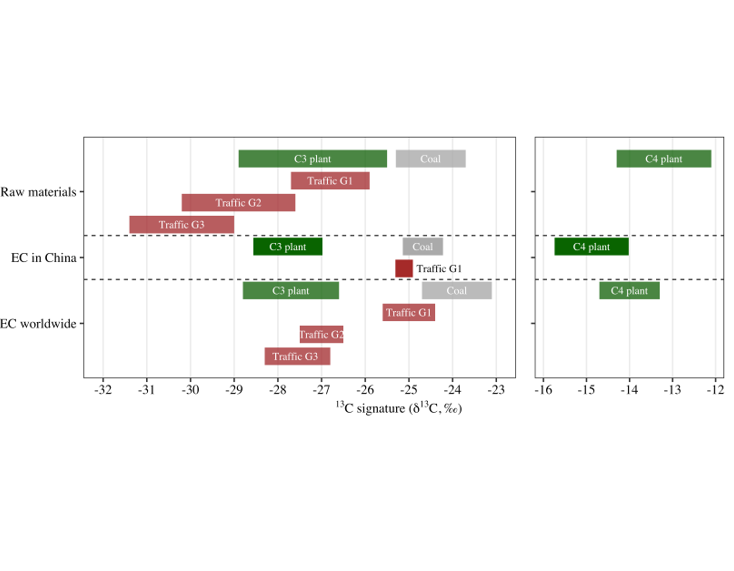Yao, P., Huang, R.J.*, Ni, H., Kairys, N., Yang, L., Meijer, H.A. and Dusek, U.*: 13C signatures of aerosol organic and elemental carbon from major combustion sources in China compared to worldwide estimates. Sci. Total Environ., 810, 151284, 2021.
Carbon isotope are increasingly used to gain insight into aerosol sources and atmospheric processes. Since elemental carbon (EC) is chemically stable, it is possible to apportion the main sources of EC (C3/C4 plant burning, coal combustion, and traffic emissions) using a dual 14C-13C isotope approach. The dual-isotope source apportionment crucially relies on accurate knowledge of 13C source signatures, which are seldom measured for EC.
A research group led by Prof. HUANG Rujin from the Institute of Earth Environment (IEE) of the Chinese Academy of Sciences measured the 13C signatures of organic carbon and elemental carbon of the main combustion sources in China, based on the newly developed automated method for thermal-optical separation of aerosol OC/EC for 13C analysis at the sub-μgC level. The global average 13C signatures were also summarized through a comprehensive literature review.
In this work, we present 13C signatures of organic carbon (OC) and EC for relevant sources in China. EC was isolated for 13C analysis based on the OC/EC split point of a thermal-optical method (EUSAAR_2 protocol). A series of sensitivity studies were conducted to investigate the EC separation and the relationship of the thermal-optical method to other EC isolation methods. Our results show that, first, the 13C signatures of raw materials and EC related to traffic emissions can be separated into three groups according to geographical location. Second, the 13C signature of OC emitted by the flaming combustion of C4 plants is strongly depleted in 13C compared to the source materials, and therefore EC is a better tracer for this source than total carbon (TC). A comprehensive literature review of 13C source signatures (of raw materials, of TC, and of EC isolated using a variety of thermal methods) was conducted. Accordingly, we recommend composite 13C source signatures of EC with uncertainties and detailed application conditions. Using these source signatures of EC in an example dual-isotope source apportionment study shows an improvement in precision. In addition, 13C signatures of OC were measured at three different desorption temperatures roughly corresponding to semi-volatile, low-volatile, and non-volatile OC fractions. Each source category shows a characteristic trend of 13C signatures with desorption temperature, which is likely related to different OC formation processes during combustion.
This study, published in Science of the Total Environment, provided composite 13C source signatures in China and worldwide with application conditions, which will be applied to more accurate aerosol carbon isotope source apportionment.

Fig.1 13C source signatures of raw materials and of EC in China and worldwide.

